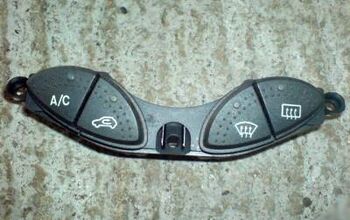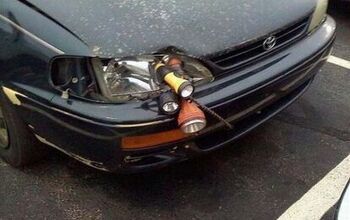Piston Slap: Going Brazillian on Bridgestones

TTAC reader Mockard writes:
As a web-savvy car enthusiast and budget autocrosser, I try to do a lot of reading before pulling the trigger on a big purchase. With a set of R-compounds now hitting the $800 mark, I want to make the most of my investment. The consensus seems to be that shaving tires can make them perform better and last longer, but I remain skeptical… The cynic in me suspects that shaving is just a way to reduce tire life and pad the shaver’s wallet to the tune of $10 a tire. Why couldn’t tire manufacturers just build tires “shaved” from the beginning, if there was a real advantage?
Sajeev responds:
Judging by the clearance pricing I (occasionally) see for certain sizes of specialty tires on Tirerack.com, I suspect that multiple tread depths of the same model is like selling the Toyota Venza with the Highlander and the Lexus RX: it’s a big risk. Economies of scale rule, so let the grassroots racing community take that financial burden, right?
In theory, shaving tires is a good idea: reduces tread squirm, puts a wider footprint on the pavement and minimizes rubber-degrading via overheating. But not all R-compound tires behave the same way on the same car. And some tracks eat more rubber than others: from my limited time in racing, purpose made asphalt tracks are friendlier to rubber than a coned-off concrete parking lot. It depends on what you want, and what you want to spend. Weekend autocrossers honing their driving skills don’t need the competitive “edge” of a shaved tire, and its opportunity cost. A hardcore Spec Miata racer might beg to differ.
But that’s only the opinion of one dude with limited track time. So now I am throwing the ball in your court. It’s time for the B&B to discuss shaved tires.

More by Sajeev Mehta
Latest Car Reviews
Read moreLatest Product Reviews
Read moreRecent Comments
- EBFlex It will have exactly zero effect
- THX1136 What happened to the other companies that were going to build charging stations? Maybe I'm not remembering clearly OR maybe the money the government gave them hasn't been applied to building some at this point. Sincere question/no snark.
- VoGhost ChatGPT, Review the following article from Automotive News: and create an 800 word essay summarizing the content. Then re-write the essay from the perspective of an ExxonMobil public relations executive looking to encourage the use of petroleum. Ensure the essay has biases that reinforce the views of my audience of elderly white Trump-loving Americans with minimal education. Then write a headline for the essay that will anger this audience and encourage them to read the article and add their own thoughts in the comments. Then use the publish routine to publish the essay under “news blog” using Matt Posky listing the author to completely subvert the purpose of The Truth About Cars.
- VoGhost Your source is a Posky editorial? Yikes.
- Fed65767768 Nice find. Had one in the early-80s; loved it but rust got to it big time.Still can't wrap my head around $22.5K for this with 106,000 km and sundry issues.Reluctant (but easy) CP.


































Comments
Join the conversation
I think it really depends on what you are doing with your car. I know my philosophy seems to be different than other people I encounter at the track. If you are driving to race and win and expense is a lesser consideration, then probably shaved tires are better, you get them to the proper depth for best traction. If you are to this level I trust you are logging your tire temps so you could figure out the best depth over a few sets of tires? If you are just out to challenge yourself and be a better driver, I don't even see the point in R compounds, unless you are looking to get experience with the tricker limits of race rubber. Myself I run Bridgestone RE-01Rs, they run great rain or shine, don't chunk even on the hottest of days on the track, and last a whole season of street and track for me. They have plenty of stick, even when they are on the cooler side which would be useful for auto-x probably. I give up a little I guess by not running street tires, and having track tires, but I don't care if I am a little slower. I value durability over ultimate capability, I like showing up and practicing my skills, not worrying too much about my stuff.
Thanks everyone for the feedback. This season is about a refresher for me, and an introduction to autocross for my co-driver. I wanted to give both of us some experience on R-compounds and also save my street tires. I picked up a set of used Toyo RA-1s; they had been shaved and have only had a few cycles through them, and the price was about the same as one new Hoosier A6.